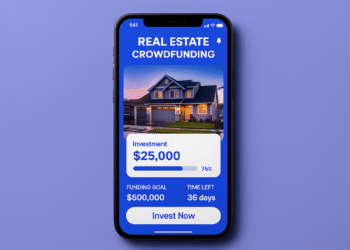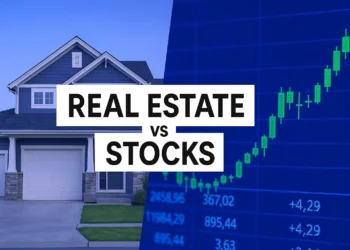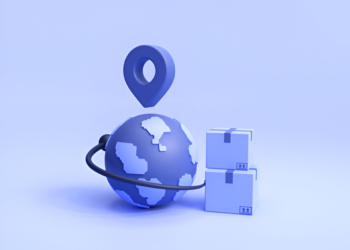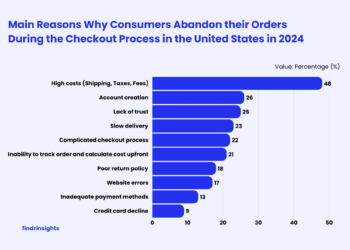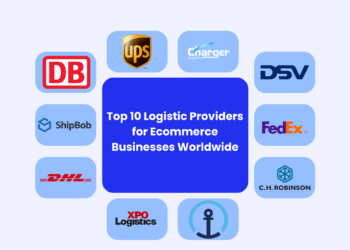You’ve heard the numbers. Amazon sellers generated over $576 billion in 2023, and third-party sellers accounted for 60% of the platform’s sales.
It’s clear there’s money to be made, but is selling on Amazon really worth your time, effort, and investment in 2025? The short answer is yes!
The opportunities on Amazon are huge, but so are the challenges.
With thousands of new sellers joining the platform every day, standing out requires strategy and persistence.
If you’re unsure about selling on Amazon fba, this article covers profitability, costs, the success rates of selling on Amazon, and factors to consider so you can make an informed decision.
Table of Contents
Pros and cons of selling on Amazon
Amazon provides a great opportunity for individuals with no eCommerce or marketing experience to launch an online business and reach a global audience of potential buyers.
However, selling on Amazon comes with some challenges. Let’s take a look at the pros and cons of selling on Amazon.
Pros of selling on Amazon
1. Access to Amazon’s large customer base
Selling on Amazon allows you to gain access to over 300 million active customers worldwide, putting your products in front of a massive, ready-to-buy audience.
As a beginner, this level of exposure is a great opportunity, especially if you don’t have enough funds to invest in marketing.
2. Hassle-free fulfillment with FBA
With FBA, you don’t have to worry about fulfilling customers’ orders. Fulfillment by Amazon (FBA) takes care of storage, shipping, and customer service for you.
According to a 2024 Jungle Scout survey, 82% of sellers use FBA because of its convenience and reliability.
3. Built-In Credibility
Amazon’s reputation as a trusted marketplace can help boost your brand’s credibility. Customers are more likely to buy from you on Amazon than on smaller, unpopular platforms.
Cons of selling on Amazon
High FBA Fees
Amazon’s fees can take a big chunk out of your revenue. Your profit margins can be reduced due to FBA fees and referral fees, which are usually 30% – 40% of your product price.
Storage Fees
Using Amazon FBA, you’ll have to pay storage fees. There are two types of Amazon FBA fees, which include monthly and aged fees.
The monthly inventory storage fee rate varies from $0.78 to $4.28 per cubic foot depending on the size and weight of your product.
While the aged inventory storage fees range from $0.50 to $6.90 per cubic foot depending on how long your inventory has been stored.
Zero control
By selling on Amazon, you’re building your business on their platform. If Amazon changes its algorithms or policies, it could affect your sales.
Also, you have zero control over your products, packaging, and shipping, and if anything goes wrong with your customers’ orders, you won’t be able to resolve customer complaints yourself, which can also result in high return rates.
How much do Amazon sellers make?
Most Amazon sellers make between $1,000 and $25,000 in sales per month, and about 31 percent make less than $500 in sales per month.
Here’s a detailed breakdown of seller earnings in a Jungle Scout data report:
| Percentage of Sellers | Monthly Sales | Annual Sales |
| 31% | Under $500 | $6,000 |
| 17% | $501-$1,000 | $6,012-$12,000 |
| 22% | $1,001-$5,000 | $12,012-$60,000 |
| 11% | $5,001-$10,000 | $60,012-$120,000 |
| 7% | $10,001-$25,000 | $120,012-$300,000 |
| 5% | $25,001-$50,000 | $300,012-$600,000 |
| 4% | $50,001-$100,000 | $600,012-$-1,200,000 |
| 1% | $100,001-$250,000 | $1,200,012-$3,000,000 |
| 1% | $251,000-$500,000 | $3,000,012-$6,000,000 |
These numbers, however, represent gross sales, not net profit.
Even if a company makes millions of dollars in sales, it could still lose money if its expenses exceed its sales revenue.
So, what about margins of profit? Amazon sellers often retain profit margins of 15–20%.
According to Jungle Scout, 57% of Amazon sellers achieve more than 10% profit margins, while 28% generate at least a 20% profit margin. The other 30% of sellers earn a lifetime profit of over $50,000.
Here’s a breakdown:
| Profit margin to Amazon sellers | Percent of sellers |
| ~1-5% | 12% |
| 6-10% | 16% |
| 11-15% | 13% |
| 16-20% | 15% |
| 21-25% | 15% |
| 26-50% | 13% |
| 51-100% | 1% |
| Not currently profitable | 13% |
Source: Jungle Scout
How much does it cost to start an Amazon FBA business?
Starting an Amazon business requires an upfront investment if you plan to launch a private label product, and that can vary based on factors like product selection, sourcing, and fulfillment methods.
However, if you have little to no startup costs, you can try retail arbitrage or wholesale. Here’s a breakdown of some expenses you might have to consider to sell on Amazon:
Amazon Fees: As an individual seller, you’ll pay $0.99 per item sold, while a professional seller account costs $39.99/month.
Additionally, there’s a referral fee (8%-15%) that varies depending on the type of product, and also you’ll have to pay fulfillment fees if you use Fulfillment by Amazon (FBA). This fee depends on the size and weight of your products.
Storage fees: Using Amazon FBA, you’ll also be charged a monthly storage fee for the space your products are stored. Also, if your product is stored for 181 days or longer, you’ll have to pay a fee for what we call aged inventory.
What is the success rate of selling on Amazon?
Selling on Amazon can be a great side hustle and a profitable business when done right. As the top eCommerce platform, Amazon earns $14,900 every second, which is about $894,000 per minute and more than $53 million in just an hour.
Being successful on Amazon goes beyond listing your products and their prices on Amazon. If done correctly, 46% of Amazon sellers can attain an average Amazon FBA success rate of 11-25%, with 64% of them likely to turn a profit within a year.
Conclusion
Is selling on Amazon FBA worth it in 2025?Absolutely
While it can be a great business to start, it does come with some drawbacks, and just like every other business, scaling and being successful requires time, lots of learning, and a lot of effort.
So, if you are planning to sell on Amazon, you want to devote time to learning how the platform works.
You can also partner with an expert who has it all figured out and understands the intricacies of building a successful Amazon FBA business.
Selling on Amazon FBA FAQs
Is selling through Amazon FBA profitable?
Yes, selling through Amazon FBA can be highly profitable, but it all depends on various factors, such as selecting the right product, transaction and shipping fees, and expenses on marketing strategies.
With Amazon handling storage, packaging, and shipping, you can save time and effort, which allows them to focus on scaling their business.
However, you have to calculate FBA fees and product costs and also consider your product competition to ensure you’re making profits.
When does Amazon FBA pay you?
Amazon pays FBA sellers every two weeks. Payments include all sales revenue from the previous 14 days, minus any Amazon fees, refunds, or returns.
You can track your payment schedule and amount in the “Payments” section of your Seller Central account.
How much does Amazon take from a $100 sale?
Amazon can charge between 8% and 15% for a $100 sale you make. This means for every $100 you make, Amazon takes anywhere from $8 to $15.
However, there are some additional Amazon fees every seller pays for. This includes the FBA fulfillment fee, seller plan fee, and storage fee.
Can I deliver my products to Amazon?
Yes, you can deliver your products to Amazon’s fulfillment centers. Sellers usually ship inventory directly from suppliers or warehouses to Amazon, but you can also arrange delivery yourself if needed.
Make sure to follow Amazon’s FBA shipment guidelines, including proper labeling and packaging. Amazon provides detailed instructions in your Seller Central account when creating a shipment plan.
